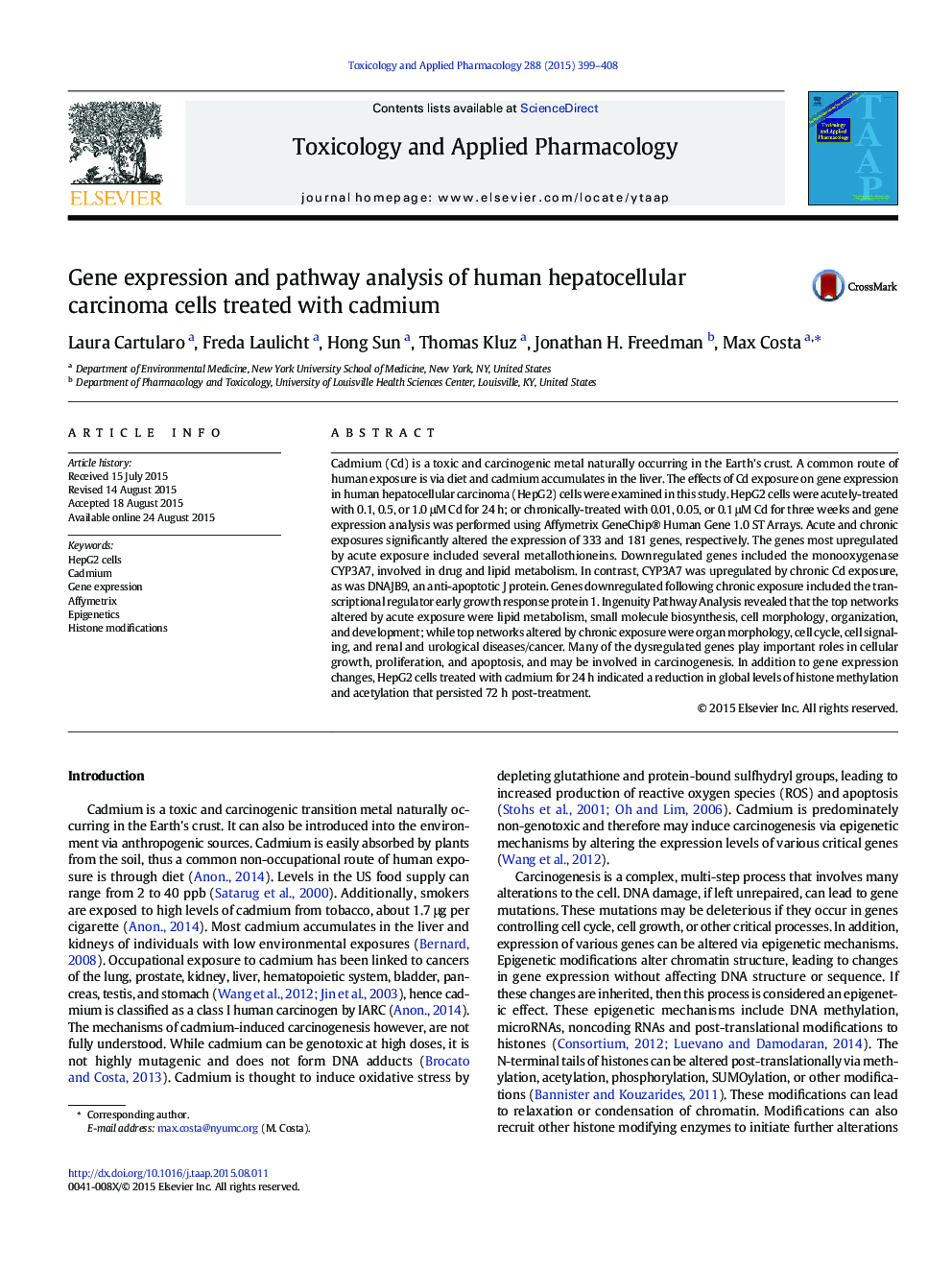| کد مقاله | کد نشریه | سال انتشار | مقاله انگلیسی | نسخه تمام متن |
|---|---|---|---|---|
| 2568323 | 1128433 | 2015 | 10 صفحه PDF | دانلود رایگان |
• A common route of human exposure to the carcinogenic metal cadmium is via diet.
• HepG2 cells were treated acutely or chronically with varying doses of cadmium.
• Gene expression analysis was performed using Affymetrix Human Gene 1.0 Arrays.
• Acute and chronic exposures altered the expression of 333 and 181 genes, respectively.
• Acute cadmium exposure altered global levels of histone methylation and acetylation.
Cadmium (Cd) is a toxic and carcinogenic metal naturally occurring in the Earth's crust. A common route of human exposure is via diet and cadmium accumulates in the liver. The effects of Cd exposure on gene expression in human hepatocellular carcinoma (HepG2) cells were examined in this study. HepG2 cells were acutely-treated with 0.1, 0.5, or 1.0 μM Cd for 24 h; or chronically-treated with 0.01, 0.05, or 0.1 μM Cd for three weeks and gene expression analysis was performed using Affymetrix GeneChip® Human Gene 1.0 ST Arrays. Acute and chronic exposures significantly altered the expression of 333 and 181 genes, respectively. The genes most upregulated by acute exposure included several metallothioneins. Downregulated genes included the monooxygenase CYP3A7, involved in drug and lipid metabolism. In contrast, CYP3A7 was upregulated by chronic Cd exposure, as was DNAJB9, an anti-apoptotic J protein. Genes downregulated following chronic exposure included the transcriptional regulator early growth response protein 1. Ingenuity Pathway Analysis revealed that the top networks altered by acute exposure were lipid metabolism, small molecule biosynthesis, cell morphology, organization, and development; while top networks altered by chronic exposure were organ morphology, cell cycle, cell signaling, and renal and urological diseases/cancer. Many of the dysregulated genes play important roles in cellular growth, proliferation, and apoptosis, and may be involved in carcinogenesis. In addition to gene expression changes, HepG2 cells treated with cadmium for 24 h indicated a reduction in global levels of histone methylation and acetylation that persisted 72 h post-treatment.
Journal: Toxicology and Applied Pharmacology - Volume 288, Issue 3, 1 November 2015, Pages 399–408
